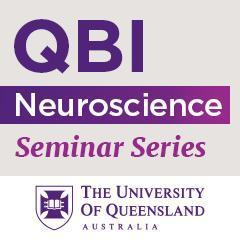Speakers: PhD Student Seminars:
1. Juan Manuel Botto (Faulkner Lab)
2. Montana Samantzis (Balbi Lab)
Title of first talk: LINE-1 retrotransposons are modulated in neurons by SOX transcription factors
LINE-1 (L1) is the only autonomously mobile retrotransposon in humans, and it has colonised ~20% of our genome. L1 activity has been identified in various somatic tissues, with the brain being a hotspot for L1 mRNA expression and retrotransposition. However, the mechanisms controlling L1 activation in the brain, and the reason why particular neuronal lineages accommodate more L1 expression or retrotransposition, remain unclear.
In this work, we explore the role of the extended SOX transcription factor family as L1 transcriptional modulators. First, we discovered that SOX6, a transcription factor required for parvalbumin (PV) interneuron identity, can drive L1 upregulation in human and mouse neurons. Pursuing this further, we screened the whole human SOX family and identified previously undescribed L1 repressors and activators using an in vitro human induced pluripotent stem cell (hiPSC) derived neuronal model.
Our data indicates that a subset of SOX proteins can influence endogenous and reporter based L1 transcription, as well as mobilisation. Overall, these results improve the understanding of L1 regulation by transcription factors in neurons.
Title of second talk: Gamma frequency electrical stimulation ameliorates age related decline
Montana Samantzis
Ageing is a complex biological process characterized by a gradual decline in physiological functions including cognitive and motor performance. During ageing there is a marked decrease in fast neuronal oscillations, particularly those in the gamma frequency band, which are essential for synchronising neuronal activity across networks. Here we aimed to investigate the effects of electrical gamma frequency stimulation on motor and cognitive decline across the ageing process in mice. We performed stimulation in middle aged (14-15 months) and aged (19-22 months) mice and characterized changes to key components of the neurovascular unit through in-vivo calcium imaging, electrophysiology, two-photon imaging, behaviour, and histological analysis. We show that gamma frequency stimulation has differential effects across aging stages, modulating neuronal and microglial responses in aged mice, and vascular and glial changes in middle aged mice. Moreover, we demonstrate that stimulation can improve motor behaviour at both timepoints, displaying the potential of gamma frequency electrical stimulation as a therapeutic avenue in ageing.
About Neuroscience Seminars
Neuroscience seminars at the QBI play a major role in the advancement of neuroscience in the Asia-Pacific region. The primary goal of these seminars is to promote excellence in neuroscience through the exchange of ideas, establishing new collaborations and augmenting partnerships already in place.
Seminars in the QBI Auditorium on Level 7 are held on Wednesdays at 12-1pm, which are sometimes simulcast on Zoom (with approval from the speaker). We also occassionally hold seminars from international speakers via Zoom. The days and times of these seminars will vary depending on the time zone of the speaker. Please see each seminar listed below for details.


